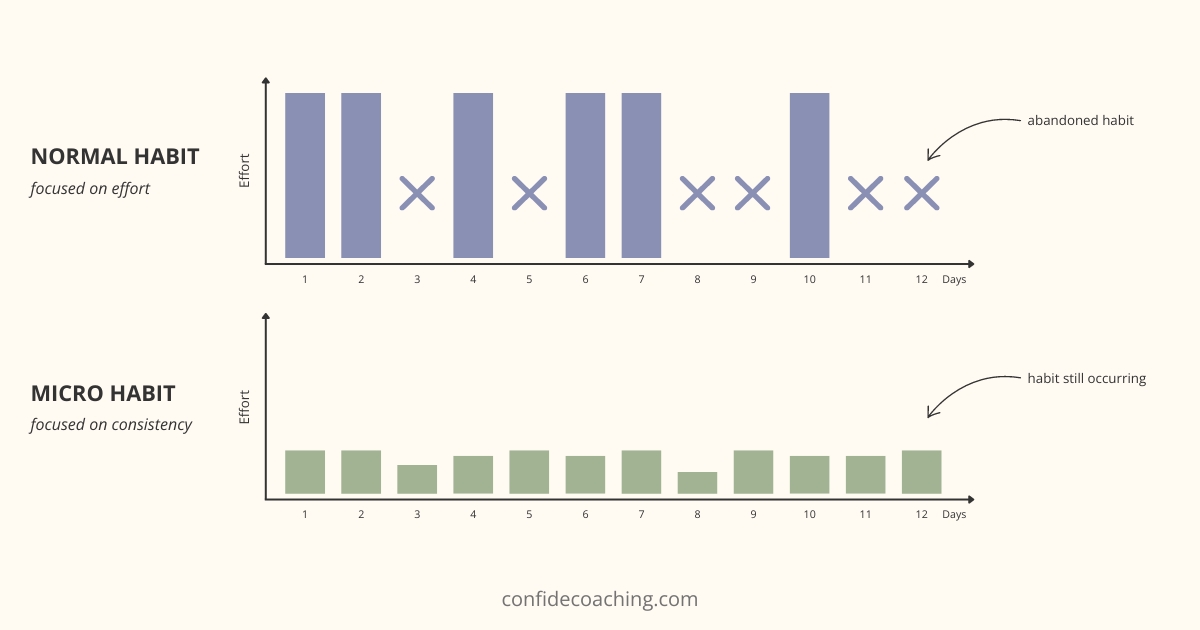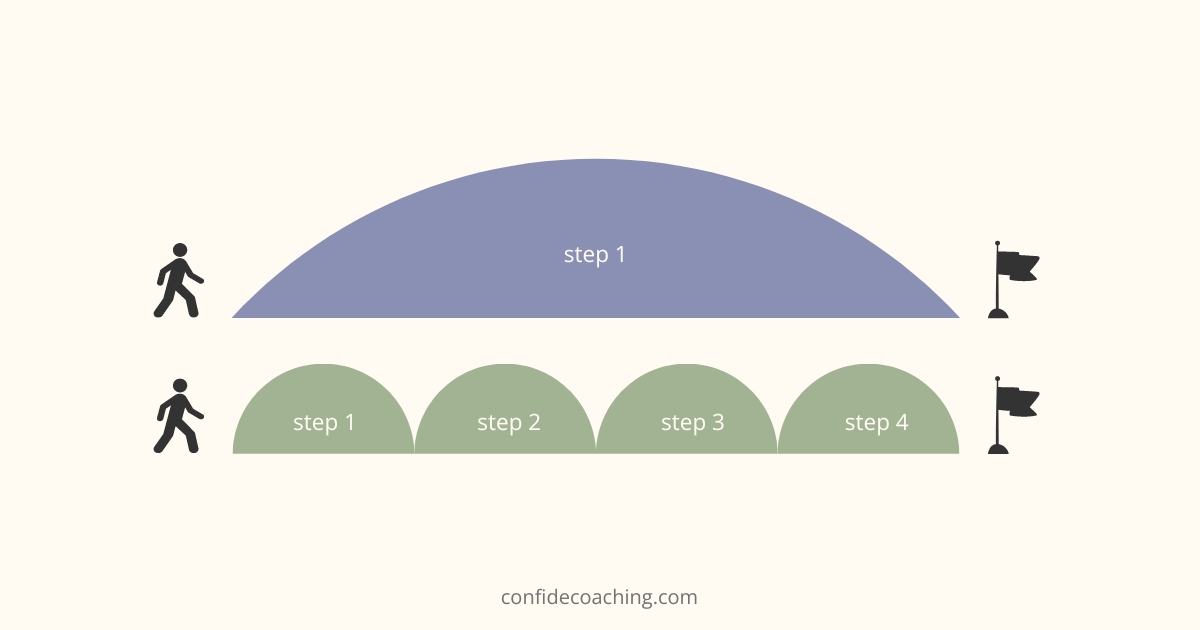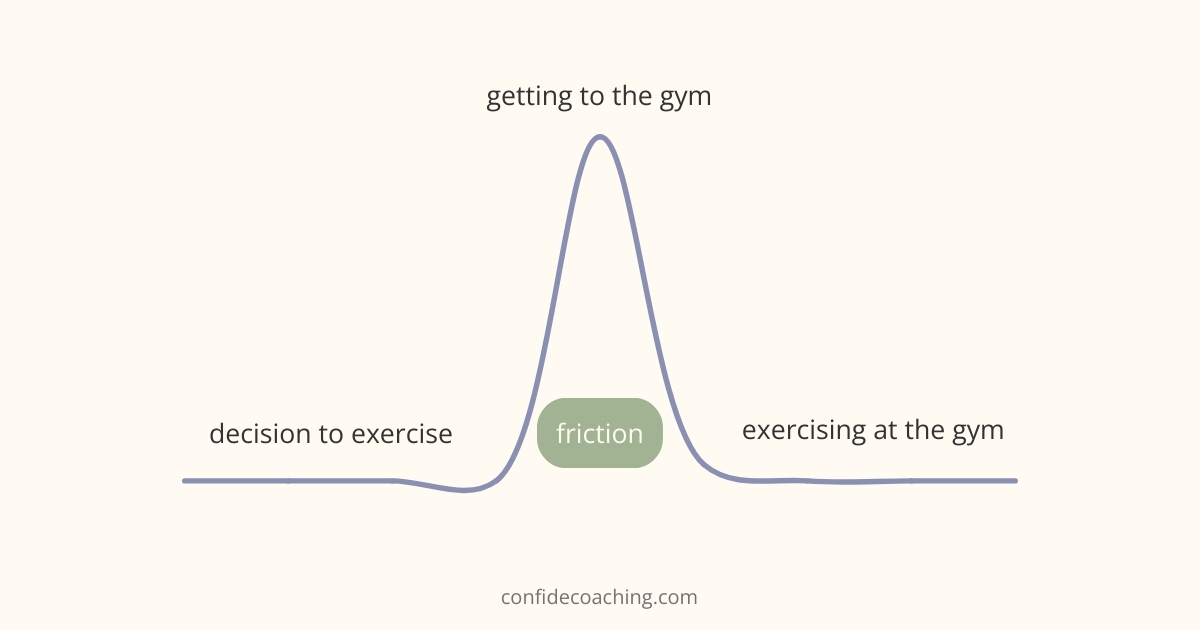
In the quest for personal growth, many of us face a daunting landscape. We’re often bombarded with messages that push for radical life changes, grand resolutions, and complete overhauls of our habits and routines. This approach, while well-intentioned, can be overwhelming, leading to a sense of inadequacy and failure when we can’t keep up with these ambitious goals. But what if the key to significant personal growth lies not in sweeping changes, but in the smallest of steps?
Introducing micro-habits—tiny, manageable actions that fit effortlessly into our daily routines. Far from the grand gestures that demand drastic shifts, these subtle adjustments gradually accumulate, resulting in profound transformation. In this article, we’ll delve into the world of micro-habits, showcasing how these seemingly minor steps can pave the way for monumental personal growth. We’ll also provide guidance on harnessing their power to foster enduring change in your life.
What are Micro-Habits?
At their core, micro-habits are small, incremental actions or behaviors that one adopts into their daily routine. Unlike the more commonly known habits that might require significant effort or change (like running a mile every day or meditating for an hour), micro-habits are designed to be so simple and quick that they’re almost impossible to refuse. Think of them as mini-tasks, such as doing two minutes of deep breathing, writing down one thing you’re grateful for, or drinking a glass of water upon waking up.
The beauty of micro-habits lies in their subtlety. Their diminutive size allows them to bypass the typical resistance, or the “limbic-friction,” as Dr. Andrew Huberman discusses in his podcast episode dedicated to the intricacies of habit formation. This approach of breaking habits into small, actionable steps aligns with the Tiny Habits method, a blueprint crafted by BJ Fogg, an adjunct professor at Stanford University. Over time, these seemingly insignificant actions compound, culminating in substantial positive changes without inducing feelings of overwhelm.
In contrast, traditional habits often come with the baggage of high expectations. We’re told to “go big or go home,” leading many to set ambitious goals that can be hard to maintain. The pitfalls of this approach are evident: when we set the bar too high, the likelihood of failure increases, leading to disappointment and discouragement. For instance, if someone decides to start exercising and commits to an hour-long gym session every day, the sheer effort required might deter them if they miss a day or two, causing them to abandon the habit altogether.
Micro-habits, on the other hand, offer a gentler, more sustainable approach. By focusing on small, consistent actions, we set ourselves up for success, allowing personal growth to become an accessible and achievable journey for everyone.

The Science Behind Micro-Habits
The human brain is a marvel of evolution, capable of learning, adapting, and forming habits that guide our daily actions and behaviors. But how exactly does the brain form these habits, and why are micro-habits particularly effective? Let’s delve into the science behind it.
1. Habit Formation in the Brain
Habits are formed in a part of the brain called the basal ganglia. When we perform an action repeatedly, a loop is created, consisting of a cue, routine, and reward. For instance, feeling stressed (cue) might lead someone to eat a chocolate bar (routine) and subsequently feel pleasure (reward). Over time, as this loop is reinforced, the action becomes automatic, turning into a habit. The prefrontal cortex, responsible for decision-making, becomes less involved, and the behavior becomes more automatic.
2. Dopamine and Reward Pathways
Dopamine, a neurotransmitter, plays a pivotal role in habit formation. It’s often referred to as the “feel-good” chemical because it’s associated with pleasure and reward. When we perform an action that results in a positive outcome, dopamine is released, signaling to the brain that the action is desirable and should be repeated. This strengthens the habit loop. Micro-habits, due to their simplicity, often lead to quick wins, resulting in frequent dopamine releases. This constant reinforcement makes them particularly sticky and effective.
3. Neural Plasticity
Neural plasticity, or neuroplasticity, refers to the brain’s ability to reorganize itself by forming new neural connections. Every time we learn something new or adopt a new behavior, our brain forms or strengthens neural pathways. The adage “neurons that fire together, wire together” encapsulates this concept. The more we repeat a micro-habit, the stronger these neural connections become, solidifying the behavior.

4. The Power of Small, Consistent Actions
So, why are small actions more sustainable? Firstly, they’re less intimidating. The thought of meditating for an hour can be daunting, but taking a few deep breaths for a minute? That’s doable. Secondly, small actions reduce the risk of burnout. They require less effort and energy, making it easier to stay consistent. And as we’ve learned, consistency is key in habit formation. Over time, these small actions compound, leading to significant changes that are both sustainable and impactful.
Benefits of Micro-Habits
The allure of micro-habits lies not just in their simplicity but in the multitude of benefits they bring to our lives. These small, consistent actions, though seemingly insignificant on their own, can lead to profound changes long-term. Let’s explore the manifold advantages of integrating micro-habits into our daily routines.
Incremental Progress Leading to Transformative Results
Much like a snowball rolling down a hill, micro-habits start small but gather momentum over time. Each day, as we engage in these tiny actions, we make incremental progress. Over weeks, months, and years, these small steps accumulate, leading to transformative results. It’s the principle of compound interest applied to personal growth; the returns on our efforts multiply as time goes on.

Reduced Resistance and Fear of Failure
One of the most significant barriers to adopting new habits is the fear of failure. When we set lofty goals for ourselves, the potential for falling short becomes a looming threat. Micro-habits, with their modest nature, reduce this resistance. The tasks are so manageable that the chances of failure are minimal, fostering a positive feedback loop. This approach also addresses the psychological aspect, where the fear of failure is often more paralyzing than failure itself. By setting ourselves up for frequent success, we build confidence and diminish this fear.
Flexibility, Adaptability, and Resilience
Life is unpredictable. There will be days when our routines are disrupted, and our plans go awry. Micro-habits, due to their short duration and simplicity, offer flexibility. Missed your 30-minute workout? You can still do five minutes of stretching. This adaptability ensures that we remain consistent in our efforts, building resilience over time. It teaches us that progress is not about perfection but persistence.
Improved Mental Well-being and Reduced Stress
The mental benefits of micro-habits are profound. As we consistently achieve our daily micro-goals, we experience a sense of accomplishment. This boosts our self-esteem and fosters a positive self-image. Moreover, because micro-habits are easily achievable, they reduce the stress and anxiety associated with larger, more daunting tasks. Over time, this consistent sense of achievement and reduced stress contributes to improved mental well-being.
Micro-habits are a testament to the power of small actions. They teach us that monumental change doesn’t always require monumental effort. Sometimes, it’s the smallest steps, taken consistently, that lead us to our most significant transformations.
How to Implement Micro-Habits- The Tiny Habits and James Clear Popular Approach
In the realm of personal growth, the concept of micro-habits has gained significant traction, thanks in part to the approaches of BJ Fogg’s Tiny Habits method and James Clear’s 2-Minute Rule. These methodologies emphasize the power of small, consistent actions as a means to achieve lasting change. This section offers a guide, drawing inspiration from both these thought leaders, to help you integrate micro-habits into your daily routine. Whether you’re a novice to the world of habit formation or looking to refine your approach, the following steps will provide clarity and direction:
1. Starting Small
Begin by selecting just one micro-habit to focus on. The key is simplicity. Whether it’s drinking a glass of water first thing in the morning or writing down one thing you’re grateful for each day, choose a habit that feels manageable. By concentrating on one habit at a time, you ensure consistency and reduce the risk of feeling overwhelmed.
2. The 2-Minute Rule
Popularized by productivity expert James Clear, this rule states: if a task takes less than two minutes, do it immediately. This principle is perfect for micro-habits. Want to start flossing? Begin with just one tooth. The idea is to make the starting point so easy that you can’t say no.
3. Stacking Habits
Attach your new micro-habit to an existing routine. For instance, if you’re trying to cultivate a reading habit, read a page after your nightly toothbrushing ritual. This technique, known as habit stacking, creates a natural cue for your new habit, ensuring you don’t forget it.

4. Tracking and Celebrating
Monitor your progress. Use a journal, calendar, or app to mark off each day you successfully complete your micro-habit. Set milestones and reward yourself for reaching them. Celebrating small wins reinforces the behavior and motivates you to continue.
Incorporating micro-habits into your life might seem trivial at first, but with consistency and the right strategies, they can lead to profound, lasting change.
Challenges and Overcoming Them
While micro-habits offer a simplified approach to personal growth, they are not without challenges. Recognizing these obstacles and devising strategies to overcome them is crucial for long-term success. Let’s delve into some common challenges and how to address them:
1. Inconsistency
One of the most common hurdles is failing to maintain consistency. It’s easy to skip a day, thinking, “It’s just a small habit.” However, these missed days can accumulate, leading to a break in the habit loop.
Solution: Set specific times for your micro-habits. For instance, if your habit is to drink water, do it every morning right after waking up. By attaching it to a specific time or event, you’re more likely to stay consistent.
2. Lack of Motivation
There will be days when you simply don’t feel like sticking to your micro-habit, questioning its significance.
Solution: Remind yourself of the bigger picture. While the action might be small, its cumulative effect can be transformative. Keeping a journal of your progress can also serve as a motivational tool, showcasing how far you’ve come.
3. External Disruptions
Life is unpredictable. Travel, work, or personal emergencies can disrupt routines, making it challenging to stick to micro-habits.
Solution: Flexibility is key. If you miss a day, don’t be hard on yourself. Instead, focus on getting back on track the next day. Remember, it’s about overall consistency, not perfection.
Tips to Stay on Track
- Accountability Partners: Having someone to share your journey with can be immensely beneficial. They can motivate you, remind you, and even join you in adopting the same or different micro-habits.
- Reminders: Use alarms, sticky notes, or apps to remind you of your daily micro-habits. These little nudges can make a significant difference.
- Setting Clear Intentions: At the start of each week, set clear intentions for your micro-habits. Knowing your “why” can be a powerful motivator.
- Visualization: Take a moment each day to visualize the benefits of your micro-habits. Imagine the positive changes they’ll bring to your life in the long run.
Dr. Andrew Huberman’s Scientific Approach to Habits
For those seeking a scientific perspective on habit formation, Dr. Andrew Huberman stands out as a beacon of knowledge. A renowned neuroscientist at Stanford University and the voice behind the acclaimed Huberman Lab podcast, Dr. Huberman offers a unique blend of science and actionable strategies to understand and harness the power of habits.
Understanding Limbic Friction in Habit Formation

Central to Dr. Huberman’s research is the concept of “limbic friction”—the energy expended in overcoming feelings like anxiety, procrastination, or fatigue. To effectively navigate this, he proposes a division of the 24-hour day-night cycle into three distinct phases:
- Morning Momentum (0-8 hours after waking): Utilize the natural surge in dopamine, adrenaline, and cortisol to tackle tasks requiring energy and focus. However, be wary of distractions.
- Creative Exploration (9-15 hours after waking): This phase, characterized by elevated serotonin levels, is ideal for activities demanding creativity and exploration rather than intense focus.
- Rest and Reset (16-24 hours after waking): A crucial phase dedicated to rejuvenation, optimizing sleep, and preparing for the next day.
A Structured Approach to Habit Formation
Dr. Huberman suggests a 21-day cycle to habit formation. Choose six new habits, aim to complete four to six daily, and then spend the subsequent 21 days tracking without adding new habits. This balance between action and reflection ensures effective habit formation.
Note: The goal isn’t to perfect all six habits. The rationale behind selecting such a large number and striving to complete the habits daily is to cultivate the practice of habit execution. It’s about repeatedly forging new habit pathways, and training your brain to establish frameworks for fresh habits. While the aim is to engage in all six habits daily, missing out on a few isn’t a major concern. The emphasis is on the consistent practice and engagement in forming new habits, rather than achieving perfection in each one.
Building on Dr. Huberman’s insights, we see the intricate link between science and daily practices in shaping our habits. Recognizing our brain’s natural rhythms can be a game-changer in our journey of personal growth. As we segue into our final reflections, let’s distill the essence of this article: the profound impact of small, consistent actions in sculpting our lives.
Take Home Message
Micro-habits, in their essence, are more than just small actions; they are powerful catalysts for enduring change. They demonstrate that personal growth doesn’t necessitate monumental efforts but can be achieved through consistent, manageable steps.
Each micro-habit, no matter how trivial it may seem, is a building block towards a larger goal, a testament to the philosophy that great things often have small beginnings. As you embark on your journey of self-improvement, remember that the path to transformation is paved with these tiny, persistent actions.
Embrace the potential of micro-habits, and let them guide you towards a life of progress and fulfillment. Today marks not just the start of a new habit but the beginning of a transformative journey. Take that first small step, and watch as it leads you to remarkable destinations.

Paul Strobl, MBA, CPC
Owner of Confide Coaching, LLC
Paul is a Master Life Coach for individuals, executives and business owners. Originally from Houston, Texas, he has been location independent for most of his adult life. He currently resides in the Rhodope Mountains of Bulgaria near the Greek border with his brilliant wife, 13-year-old stepson (officially adopted in 2021!) and a Posavac Hound rescue.
References
Clear, J. (2018). Atomic Habits: An Easy & Proven Way to Build Good Habits & Break Bad Ones. Penguin Random House.
Fogg, B.J. (2019). Tiny Habits: The Small Changes That Change Everything. Houghton Mifflin Harcourt.
Huberman, A. (2021). “The Science of Making & Breaking Habits.” Huberman Lab Podcast, Episode 53.
Duhigg, C. (2012). The Power of Habit: Why We Do What We Do in Life and Business. Random House.
Graybiel, A.M. (2008). “Habits, Rituals, and the Evaluative Brain.” Annual Review of Neuroscience, 31, 359-387.

